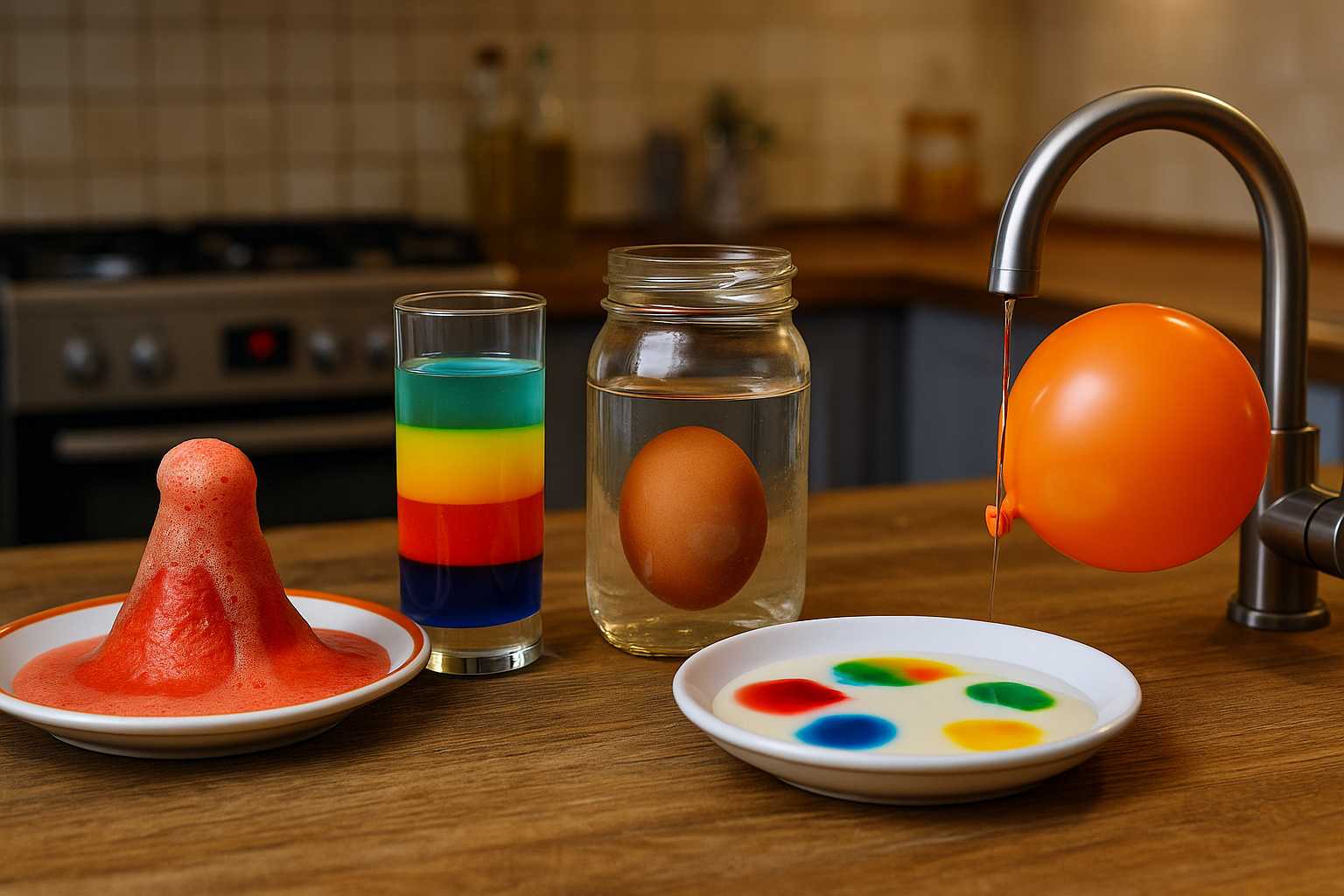Science doesn’t always demand fancy labs or expensive tools. Often, some of the most fascinating experiments happen right at home with items sitting in your pantry or fridge. From bubbling chemical reactions to mysterious colour changes, the kitchen is a treasure trove for exploring scientific principles. These engaging experiments are not just fun but also teach valuable concepts about chemistry, physics, and biology, perfect for sparking curiosity and learning through hands-on discovery.
1. Volcano Eruption with Baking Soda and Vinegar
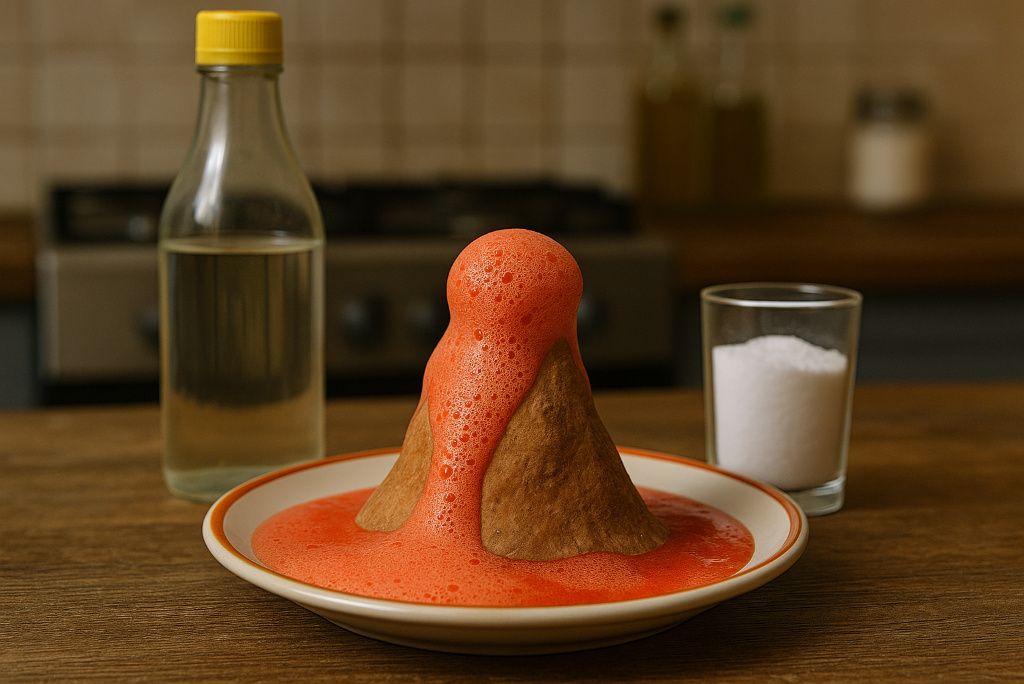
This classic experiment brilliantly showcases an acid-base reaction. Mix a few tablespoons of baking soda into a small mound, add some dish soap and red food colouring, then pour in vinegar. Instantly, foamy “lava” bubbles out as carbon dioxide gas forms. This is the same principle behind some fire extinguishers and antacid tablets.
It’s an easy way to visualise chemical reactions happening around us every day. You can experiment with different shapes for your volcano, or try using other acids like lemon juice to see how the reaction changes. It’s a perfect chance to discuss gas formation, pressure, and real volcanic activity.
2. Rainbow in a Glass
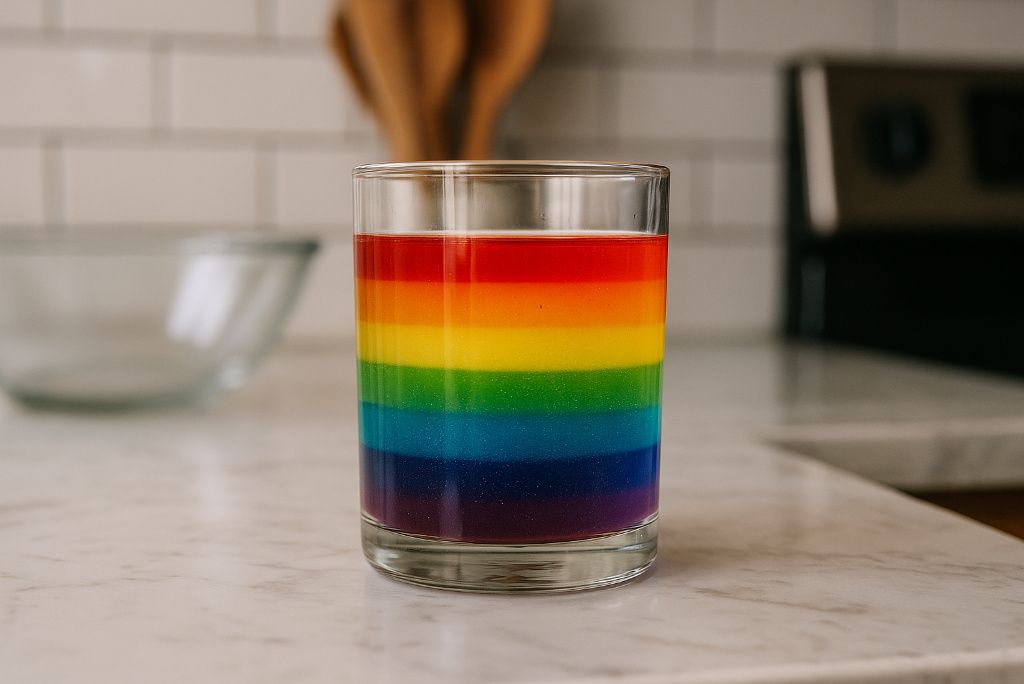
By layering liquids of different densities, you can create a stunning rainbow in a glass. Pour coloured corn syrup, dish soap, water, vegetable oil, and rubbing alcohol slowly into a tall glass. Each layer stays separate due to its unique density. It’s an eye-catching lesson in fluid dynamics and density differences, akin to how oil spills float on water.
For added fun, gently tilt the glass and observe how the layers shift without mixing. You can also test other liquids like honey or maple syrup to see where they settle. It’s a vivid demonstration of how density affects the behaviour of substances in our world.
3. Invisible Ink with Lemon Juice
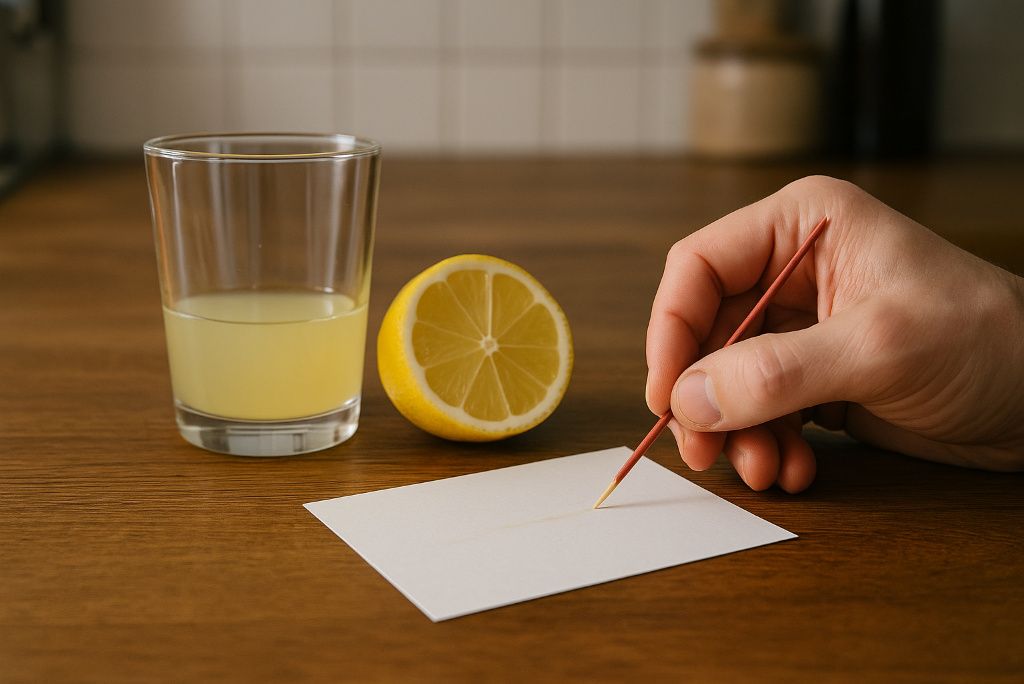
Write a secret message using a cotton swab dipped in lemon juice. Let it dry, then reveal your hidden words by gently heating the paper with a hair dryer or light bulb. Heat causes the citric acid in lemon juice to oxidise, turning it brown. The technique resembles old methods spies used to send secret messages.
Smithsonian Magazine offers a deeper dive into invisible inks here. Try writing codes or drawings for others to reveal, and experiment with other “inks,” like milk or white vinegar. It’s a fun way to discuss chemical changes and oxidation reactions in everyday life.
4. Dancing Raisins

Drop a few raisins into a glass of clear soda, like Sprite. Initially, the raisins sink, but as bubbles stick to them, they float upward. When bubbles burst at the surface, raisins sink again. This simple experiment illustrates buoyancy and gas adhesion—principles important in nature and technology. It’s similar to how air bubbles help divers ascend underwater.
You can try this with other objects, like popcorn kernels, to compare how different surfaces attract bubbles. It’s a fascinating look at gas density, fluid dynamics, and how small changes affect floating and sinking in liquids.
5. Homemade Rock Candy
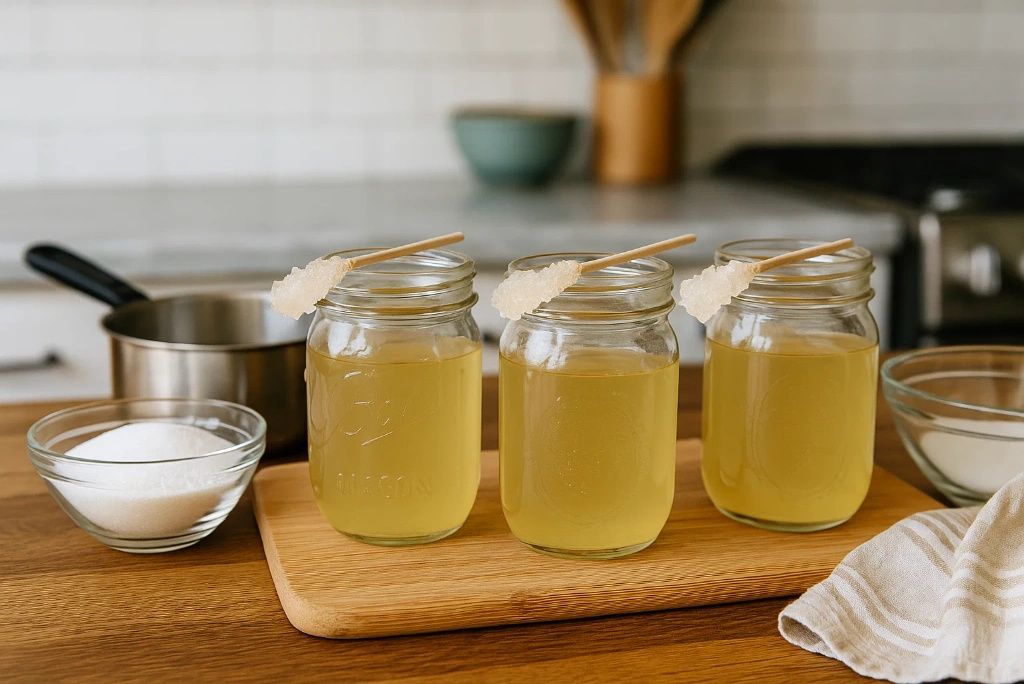
Dissolve as much sugar as possible in hot water until it becomes supersaturated. Pour into a jar, hang a string or stick in the solution, and wait. Over several days, sugar crystals form on the string, growing bigger daily. This shows crystallisation, the same process used in manufacturing many salts and minerals. Rock candy is essentially edible crystals!
Check out the Exploratorium’s guide for more details. Experiment with food colouring to make colourful crystals, or compare how quickly crystals grow at different temperatures. It’s a delicious way to understand solubility, evaporation, and crystal formation, topics crucial in science and cooking alike.
6. Magic Milk
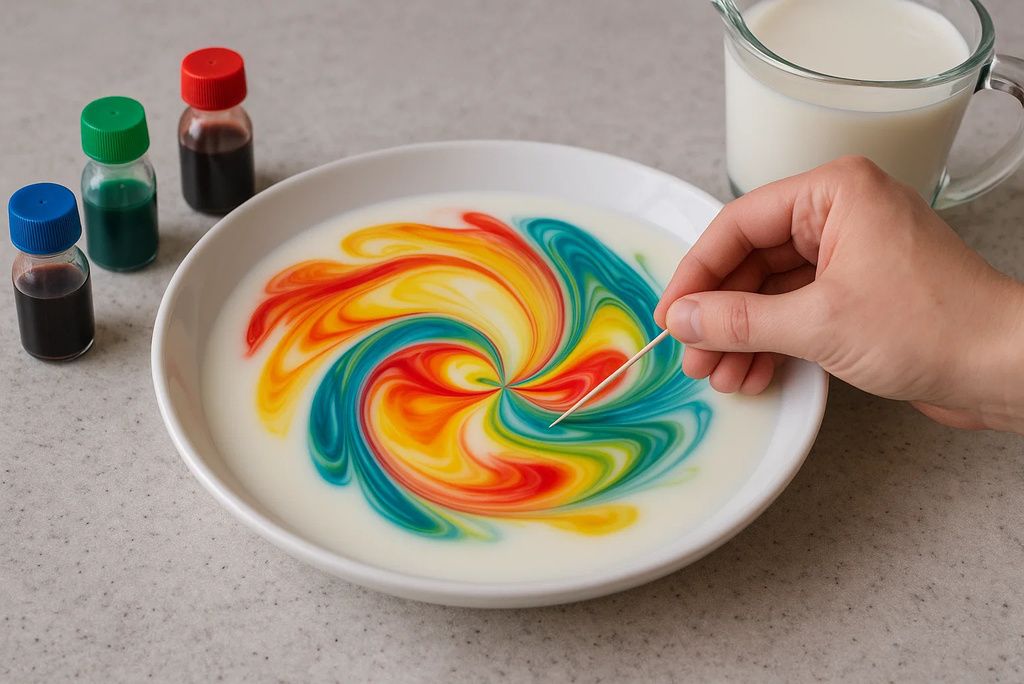
Pour milk into a shallow dish, add drops of food colouring, and touch the surface gently with a cotton swab dipped in dish soap. Colours explode outward in swirling patterns. Soap disrupts fat molecules in milk, creating movement that makes the colours dance.
This reveals surface tension and molecular interactions—a phenomenon used in emulsifying sauces or cleaning greasy dishes. Try different types of milk, like skim or cream, to see how fat content changes the patterns. It’s a visually stunning way to learn about chemistry and why soaps work so effectively in our daily lives.
7. Egg in a Bottle
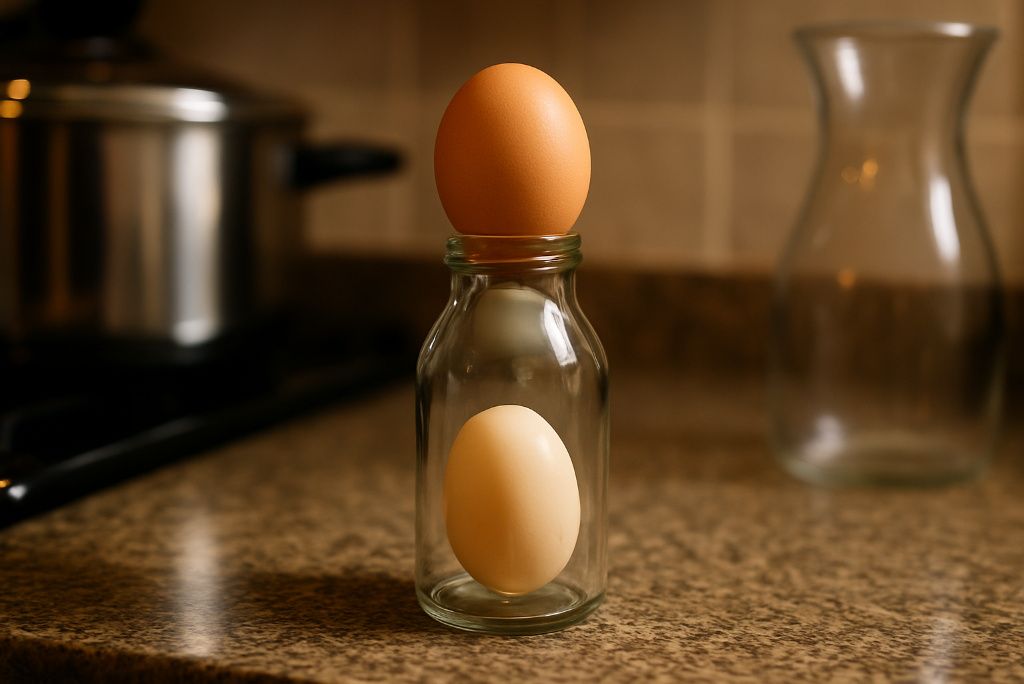
Heat the neck of a glass bottle briefly, place a peeled hard-boiled egg over the opening, and watch as the egg gets sucked inside. The cooling air inside the bottle reduces pressure, creating suction that pulls the egg through the neck. It’s a fun demonstration of air pressure differences, much like how vacuums work. Explore what happens if you use a balloon instead of an egg, or test bottles of different sizes to observe pressure differences. This experiment makes invisible forces like air pressure both visible and exciting to learn about.
8. Floating Paperclip
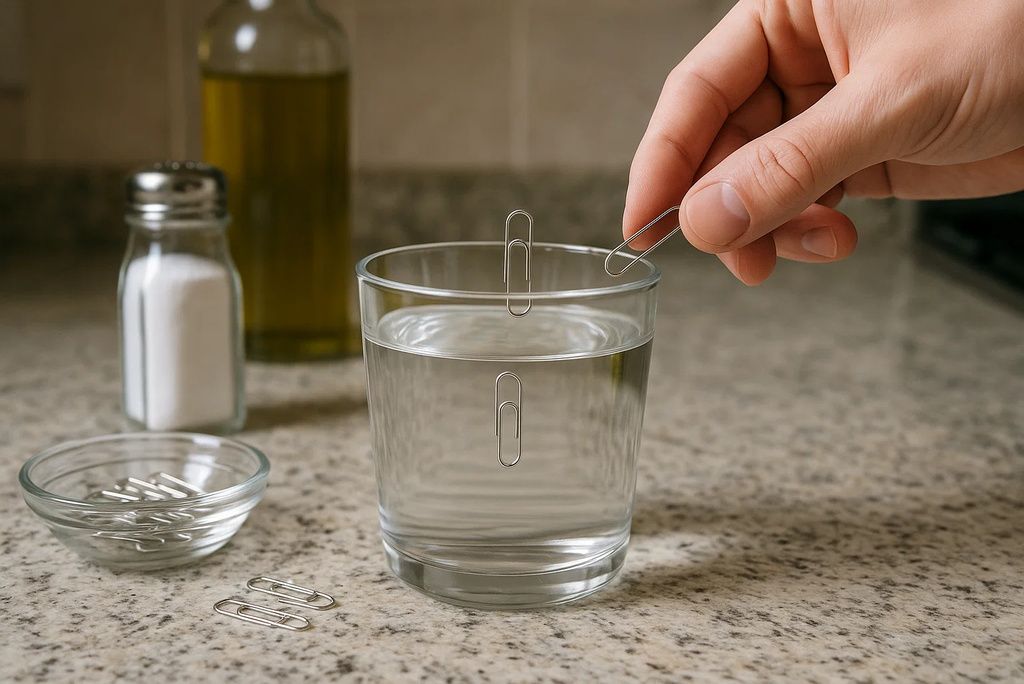
Carefully lower a paperclip onto the surface of water using a fork or tissue. If done gently, it stays afloat due to surface tension, despite metal being denser than water. Adding a drop of soap destroys this tension, causing the clip to sink. This is similar to how some insects walk on water. Learn about surface tension from Britannica. Try using different objects, like aluminium foil shapes, to explore how surface area impacts floating. It’s an engaging way to explore how molecules stick together to create invisible forces that shape the world.
9. Oobleck: A Non-Newtonian Fluid
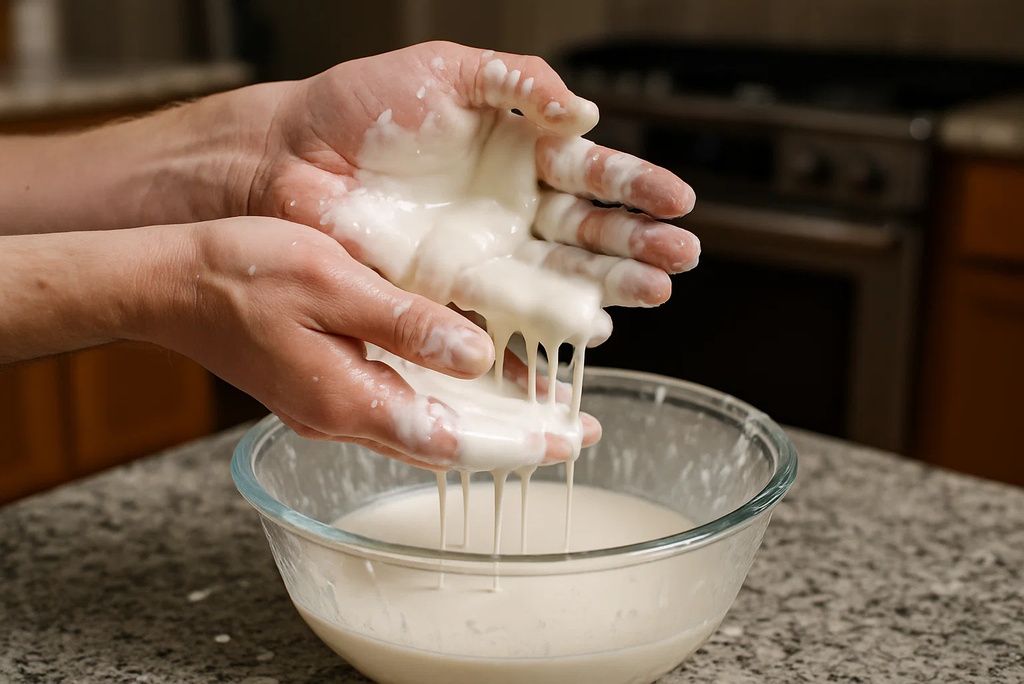
Mix cornflour with water until it’s thick but pourable. Press or punch it—it feels solid. Let it sit—it flows like liquid. This “oobleck” behaves as a non-Newtonian fluid, changing viscosity under force. Such properties are used in body armour and industrial processes. The phenomenon fascinates physicists and kids alike. Challenge yourself to run across a large pan of oobleck or drip it from a spoon to see the unique texture changes. It’s a perfect entry point to discussions about rheology, materials science, and unexpected behaviours in everyday substances.
10. Instant Ice
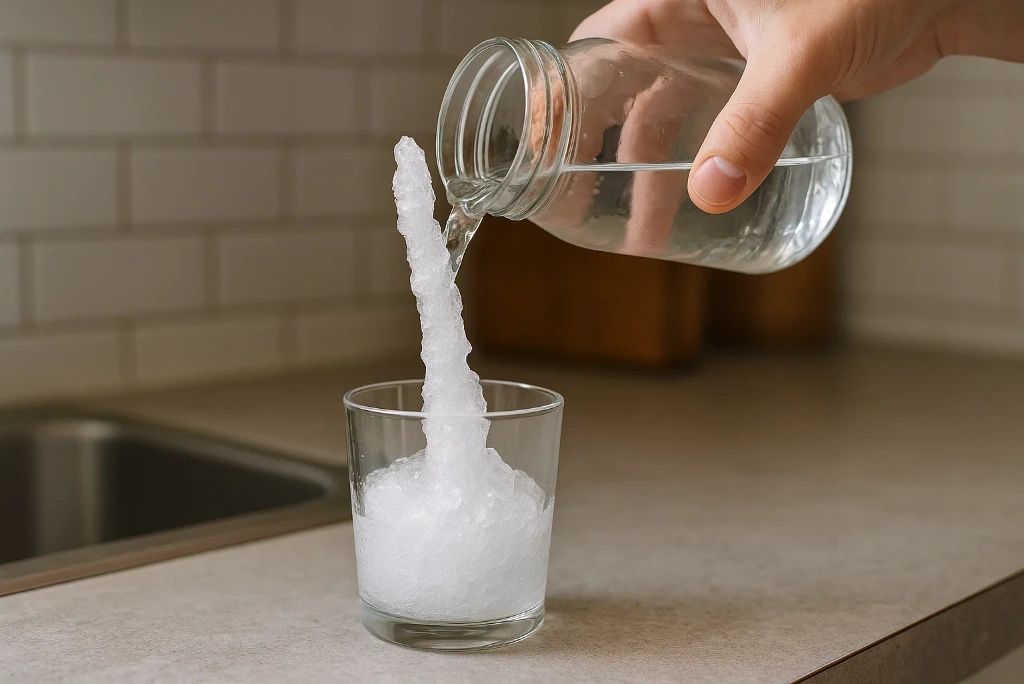
Chill bottled water below freezing without solidifying it. Open it carefully, then pour it onto ice cubes. The water freezes instantly into slushy ice. This is supercooling—a state where liquids remain liquid below their freezing point until disturbed. It’s used in freeze storage techniques and explains frostbite risk. Test different brands of bottled water or gently tap the side of the bottle to trigger freezing inside. Supercooling is a fascinating subject in physics and shows how small disturbances can transform liquids into solids in an instant.
11. Red Cabbage pH Indicator

Chop red cabbage and soak it in hot water to extract its purple juice. This acts as a natural pH indicator. Adding vinegar turns it pink (acidic), while baking soda turns it greenish-blue (alkaline). Chemists use similar indicators to test substances. It’s also a colourful example of plant pigments changing under different conditions. You can test juices, sodas, or soap solutions and record the colours to make your own pH chart. This experiment beautifully combines chemistry and art while explaining acidity, alkalinity, and the hidden science in our food and cleaning products.
12. Water Defying Gravity
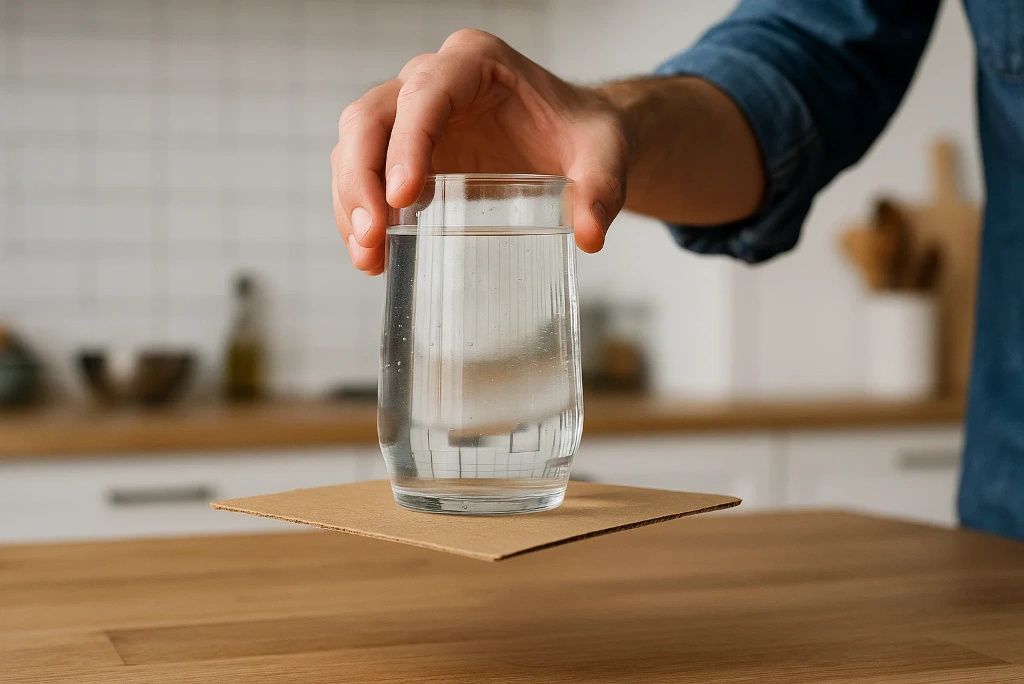
Fill a glass to the brim, place a card over the top, and carefully flip it upside down. The card remains securely in position, preventing the water from spilling out! Atmospheric pressure pushing upward on the card holds the water in, overcoming gravity. It’s a great example of pressure differences, similar to how suction cups stick. Try this with plastic sheets or cardboard and observe how materials affect the seal. It’s a dramatic way to introduce air pressure, physics concepts, and the unseen forces that keep everything in balance around us.
13. Bouncing Egg
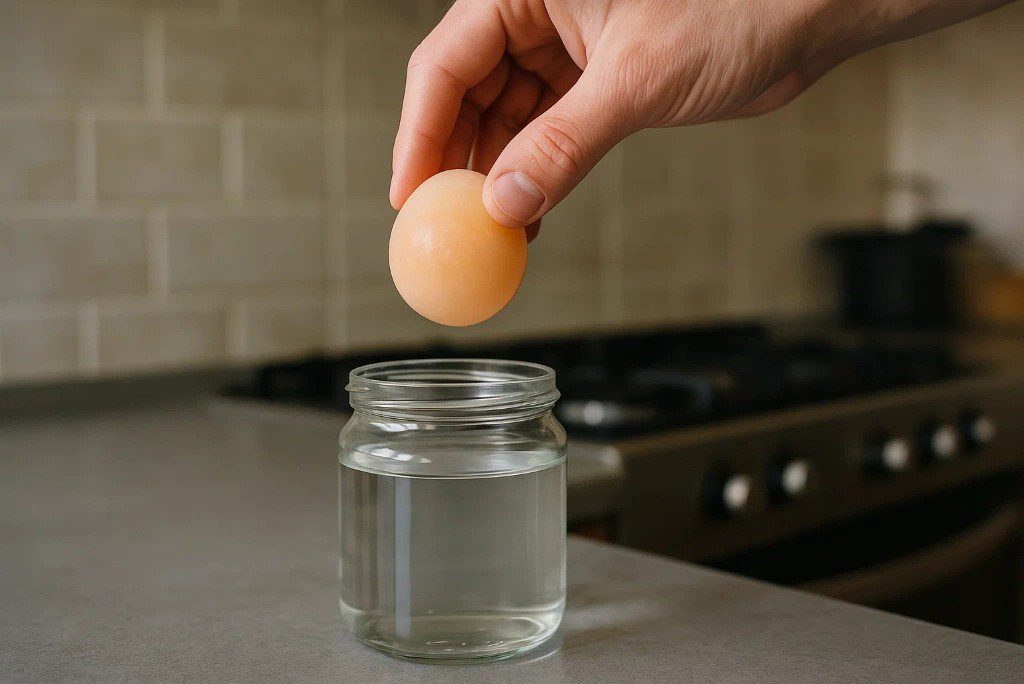
Soak an egg in vinegar for 24-48 hours. The shell dissolves, leaving a rubbery membrane. The egg becomes bouncy yet delicate. Vinegar’s acetic acid reacts with calcium carbonate in the shell—a chemical reaction used in cleaning limescale. The result shows how acids can break down solids. Gently bounce the egg on different surfaces to test its strength, but be careful—it’s still fragile! This fun experiment reveals the fascinating chemistry behind decalcification and how acids interact with minerals in everyday life.
14. Ice Fishing
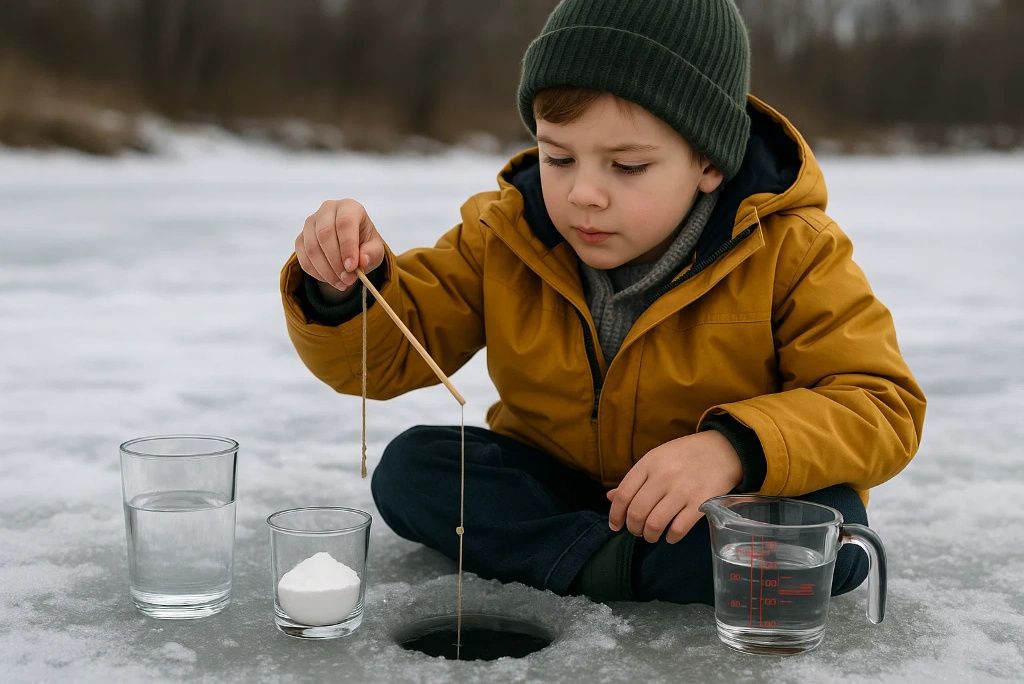
Sprinkle salt on an ice cube, place a string over it, and wait. The ice melts slightly, then refreezes around the string, letting you lift the cube. Salt lowers the freezing point of water—a principle used for de-icing roads. It’s a simple way to explore freezing-point depression. Experiment with different types of salts or try lifting multiple ice cubes at once. This activity explains why salt is effective in winter and how small changes in chemistry can impact everyday practical tasks.
15. Static Electricity with a Balloon
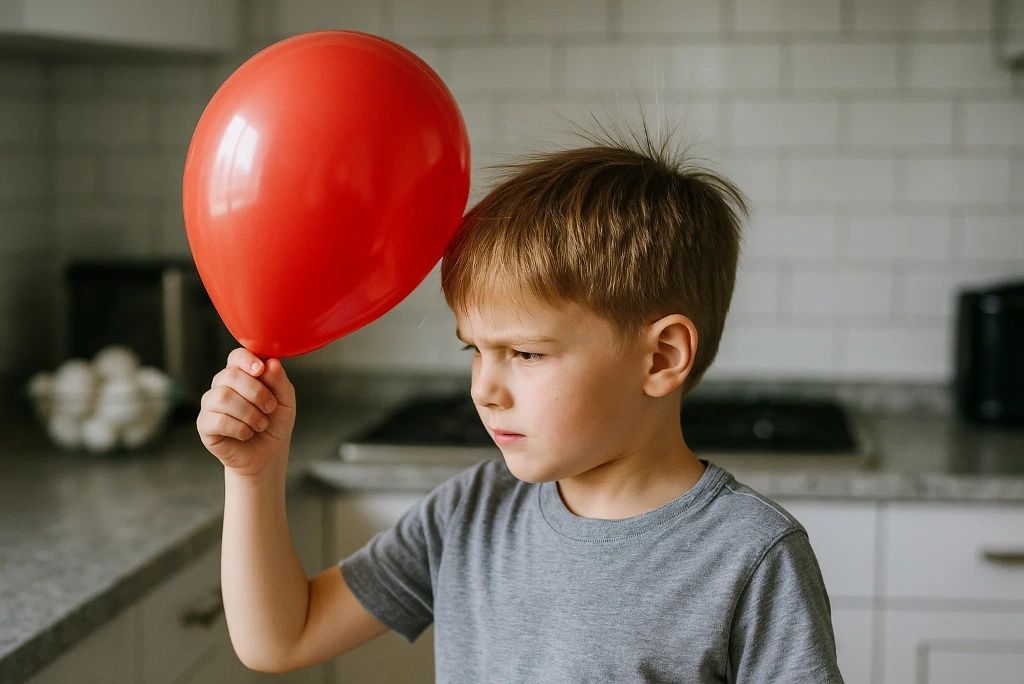
Rub a balloon on your hair and hold it near a trickle of water from a faucet. The water bends toward the balloon due to static electricity, attracting water molecules. This experiment illustrates how charges interact, similar to how static cling happens in laundry. Static electricity has practical uses in photocopiers and air purifiers. Find details on BBC Bitesize. Try using different materials like wool or silk to see how well they build up static charges. It’s a simple way to explore physics concepts of electrons, attraction, and the invisible forces shaping technology and nature.
Note: This article is intended for informational purposes only. Perform experiments safely, and supervise children during any scientific activities.

